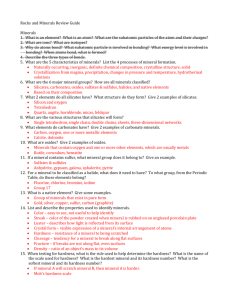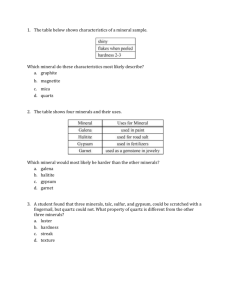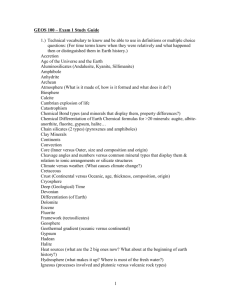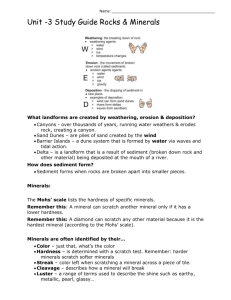Rocks and Minerals Review Guide
advertisement
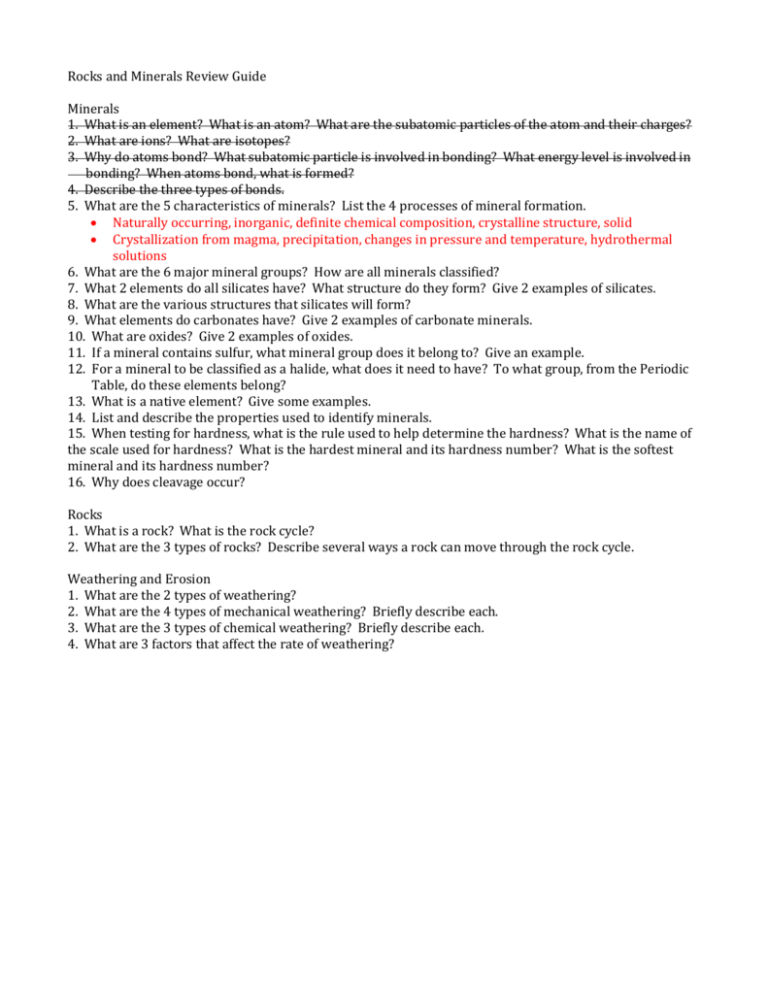
Rocks and Minerals Review Guide Minerals 1. What is an element? What is an atom? What are the subatomic particles of the atom and their charges? 2. What are ions? What are isotopes? 3. Why do atoms bond? What subatomic particle is involved in bonding? What energy level is involved in bonding? When atoms bond, what is formed? 4. Describe the three types of bonds. 5. What are the 5 characteristics of minerals? List the 4 processes of mineral formation. Naturally occurring, inorganic, definite chemical composition, crystalline structure, solid Crystallization from magma, precipitation, changes in pressure and temperature, hydrothermal solutions 6. What are the 6 major mineral groups? How are all minerals classified? 7. What 2 elements do all silicates have? What structure do they form? Give 2 examples of silicates. 8. What are the various structures that silicates will form? 9. What elements do carbonates have? Give 2 examples of carbonate minerals. 10. What are oxides? Give 2 examples of oxides. 11. If a mineral contains sulfur, what mineral group does it belong to? Give an example. 12. For a mineral to be classified as a halide, what does it need to have? To what group, from the Periodic Table, do these elements belong? 13. What is a native element? Give some examples. 14. List and describe the properties used to identify minerals. 15. When testing for hardness, what is the rule used to help determine the hardness? What is the name of the scale used for hardness? What is the hardest mineral and its hardness number? What is the softest mineral and its hardness number? 16. Why does cleavage occur? Rocks 1. What is a rock? What is the rock cycle? 2. What are the 3 types of rocks? Describe several ways a rock can move through the rock cycle. Weathering and Erosion 1. What are the 2 types of weathering? 2. What are the 4 types of mechanical weathering? Briefly describe each. 3. What are the 3 types of chemical weathering? Briefly describe each. 4. What are 3 factors that affect the rate of weathering?




